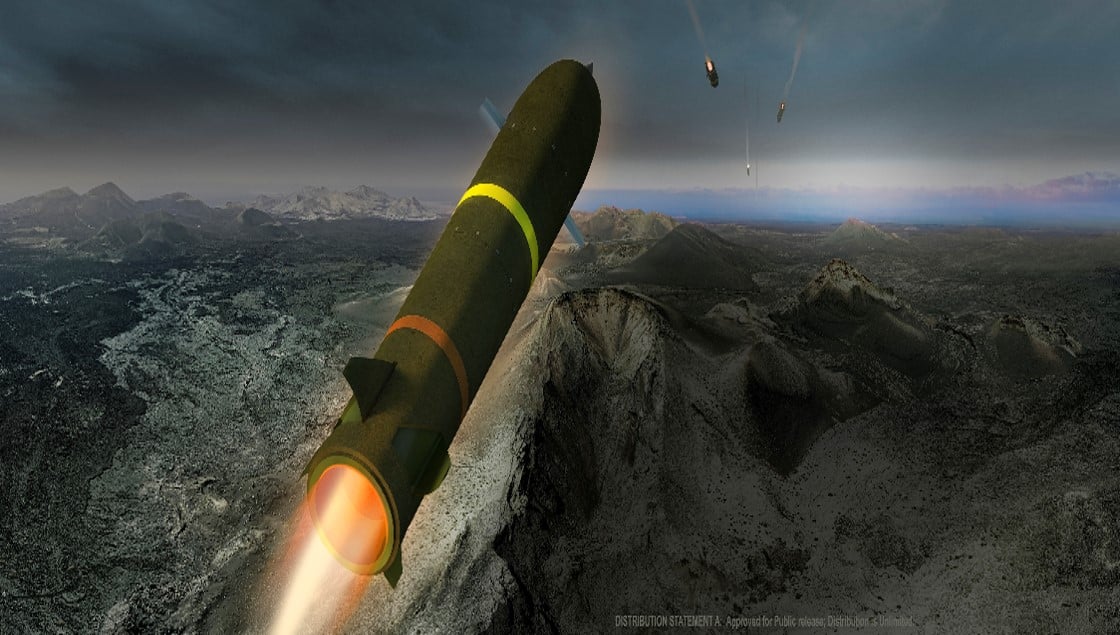Aviation
Boeing, Nammo Complete Long-Range Ramjet Artillery Test
Boeing [NYSE: BA] and the Norwegian defense and aerospace company Nammo has further shown the practicality of one of the U.S. Army’s modernization priorities: long-range precision shots.

The successful test-firing of a ramjet-powered artillery projectile by Boeing and the Norwegian defence and aerospace company Nammo has further shown the practicality of one of the U.S. Army’s modernization priorities, long-range precision shots.
A Boeing Ramjet 155 projectile was shot out of a cannon on June 28 during a test at the Andya Test Center in Norway, and its ramjet engine successfully ignited. It displayed stable flight due to carefully managed engine combustion.
The Andya long-range test comes after years of ramjet technology research, development, and testing by Boeing and Nammo, including more than 450 static or short-range tests.
In an effort to jointly develop and construct the following generation of boosted artillery projectiles, Boeing Phantom Works and Nammo have been collaborating. The Ramjet 155 projectile development and maturation contract was given to the Boeing-Nammo team in July 2019 as part of the XM1155 programme of the US Army. A Phase II technology development contract was given to the group in May 2021.
Ramjet 155 uses a supersonic projectile moving forward in an engine that uses only that forward velocity to compress the air pulled in combustion. The initiative, which is thought of as a cross between guided artillery and missiles, has as its goal the development of a universal round that can be used in both L39 and L58 cannons. In the upcoming months, more testing and demonstrations of the technology are planned as the team continues to refine and develop it.
International aerospace and defence business Nammo has its main office in Norway. Nammo is a top manufacturer of rocket motors, shoulder-fired systems, and speciality ammunition with more than 2,700 people, 28 production sites, and a presence in 12 countries.

Aviation
COMAC Unveils Plans for the C929 to Rival Airbus and Boeing

After the success of China’s first C919 aircraft, the country is setting its sights on developing a larger plane. COMAC (Commercial Aircraft Corporation of China) has officially confirmed plans to build a widebody aircraft, marking a significant step in its aircraft lineup.
Traditionally, Airbus and Boeing dominate the widebody aircraft market, with decades of expertise in developing planes and engines capable of carrying heavy payloads. China, which currently relies on imported engines, is now aiming to challenge these giants with its own widebody jet, the C929, designed to compete with the Airbus A350 and Boeing 777.
American Airlines Is Looking for Flight Attendants: Apply Now
The C929 will be China’s first independently developed long-range widebody aircraft. It adheres to international airworthiness standards and boasts independent intellectual property rights. The baseline version is designed to seat 280 passengers and offers a range of 12,000 kilometers, catering to global demand for both regional and international air travel.
Russia, which also needs reliable narrowbody and widebody aircraft, could become a key customer for the C929. Additionally, China plans to target the broader Asian market as it continues to expand its aviation capabilities.
Close Call at Heathrow: BA Flight Narrowly Escapes Drone Collision
China’s aviation progress includes the ARJ21 (now called C909), a regional jet with 100 seats for shorter routes, and the C919, a narrowbody jet with 180 seats designed to rival the Boeing 737 MAX and Airbus A320. Both models have found increasing demand in the domestic market.
At China’s largest air show in Zhuhai, COMAC announced that Air China will be the launch customer for the C929 widebody jet, though details about order size and delivery timelines were not disclosed.
Other major deals announced by COMAC include:
- Hainan Airlines: Firm orders for 60 C919 and 40 C909 regional jets.
- Colorful Guizhou Airlines: 30 C909 jets, with 20 firm orders and 10 provisional agreements.
The C929, renamed from the CR929 after Russia withdrew from the joint development project in 2023, is expected to carry 280–400 passengers with a range of 12,000 kilometers, competing directly with Boeing’s 787 Dreamliner.
According to COMAC’s deputy general manager, Tong Yu, the first fuselage section of the C929 is expected by September 2027, with prototype test flights anticipated soon after.
-

 Aviation2 months ago
Aviation2 months agoMicrosoft Flight Simulator Raises $3 Million to Bring Back the An-225 Mriya
-

 Airlines2 months ago
Airlines2 months agoQantas Engineers Stage Walkout Over Cost of Living Concerns
-

 Airlines2 months ago
Airlines2 months agoQatar Citizens Can Travel to the United States Without a Visa
-

 Aviation2 months ago
Aviation2 months agoQatar Airways bans these new Electronic Devices on plane
-

 Airlines2 months ago
Airlines2 months agoJapan Airlines Rolls Out Free Domestic Flights to International Passengers
-

 Defence2 months ago
Defence2 months agoWhich Country Has the Largest Fleet of Fighter Aircraft?
-

 Airport2 months ago
Airport2 months agoWestern Sydney Airport Welcomes Its First Plane After 6 Years of construction
-

 Aviation2 months ago
Aviation2 months agoDid you know ? Once Boeing 747 carried 1088 passenger in 1991








